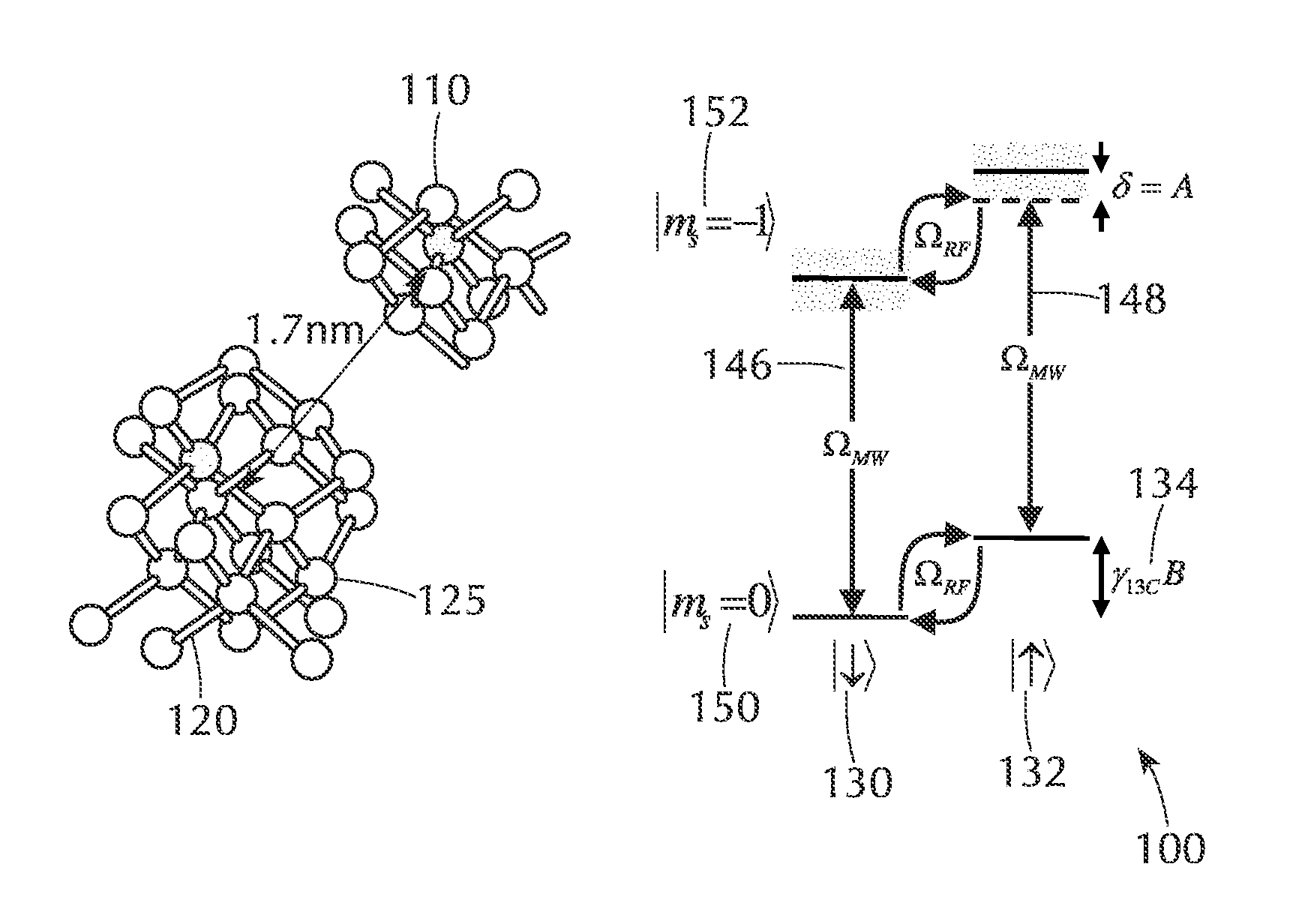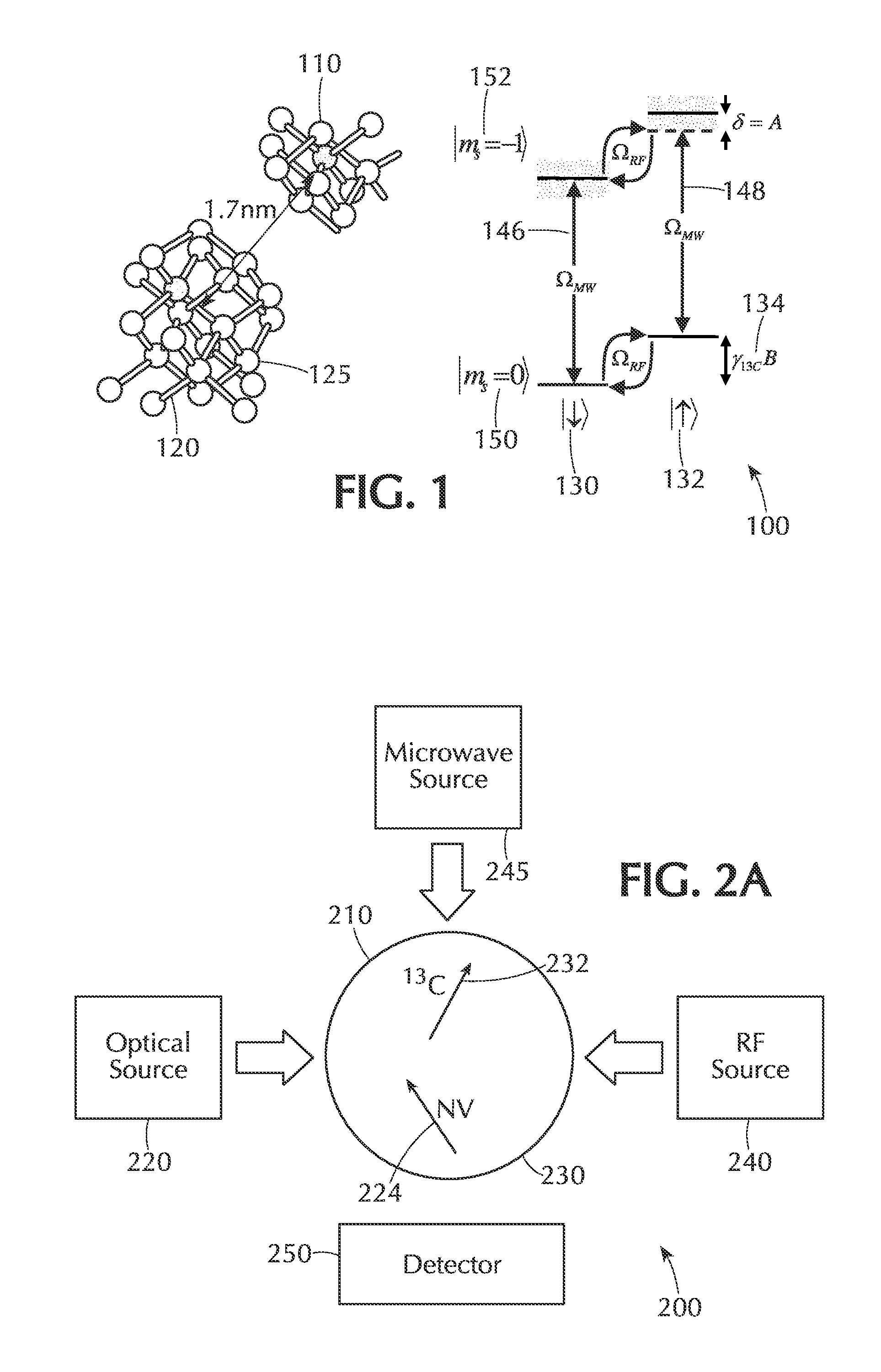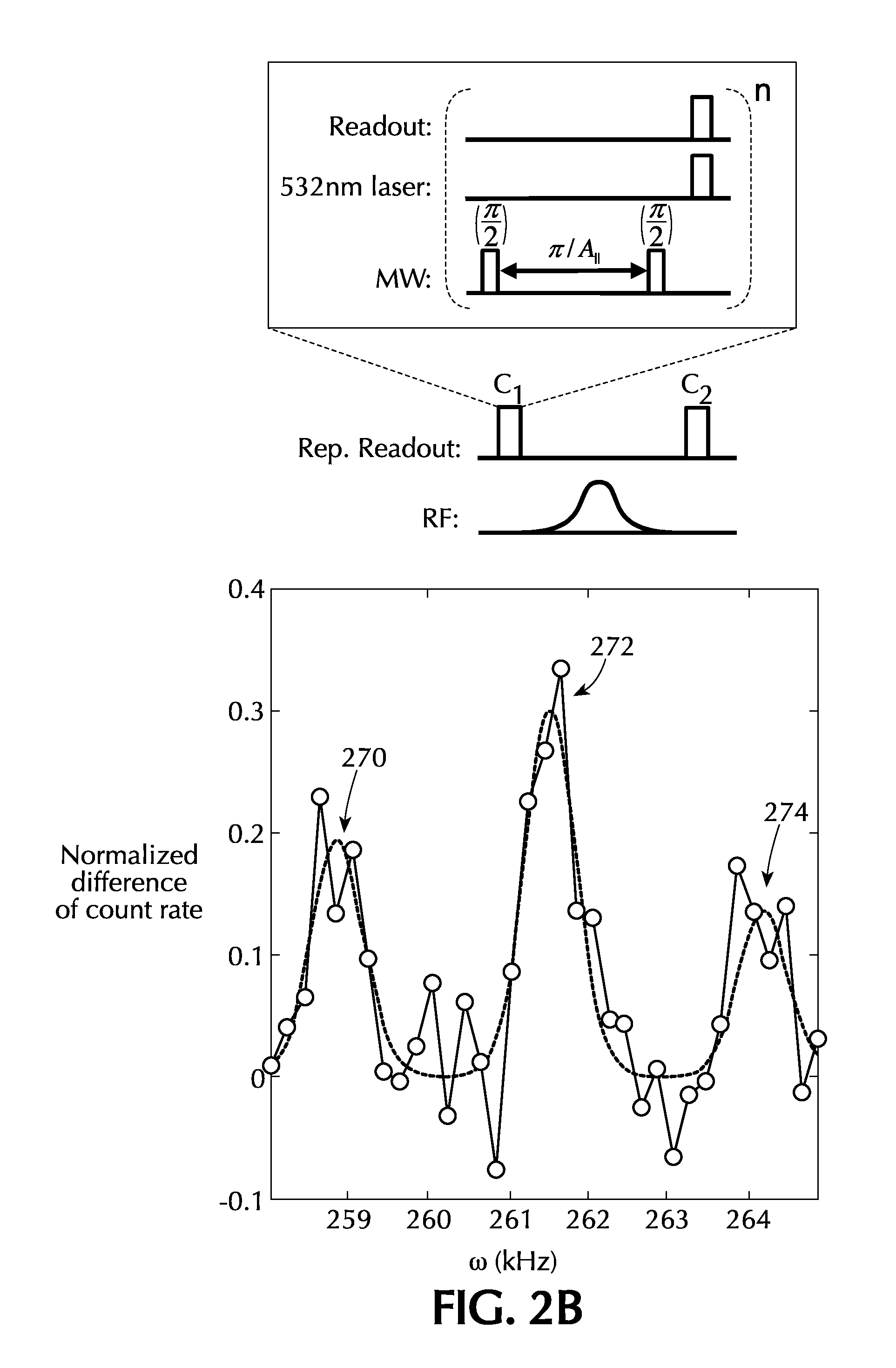Solid-State Quantum Memory Based on a Nuclear Spin Coupled to an Electronic Spin
a quantum memory and nuclear spin technology, applied in quantum computers, digital storage, instruments, etc., can solve the problems of complex infrastructure involving laser cooling and ultrahigh vacuum, and achieve the effect of efficient decoupling the nuclear spin and high fidelity initialization
- Summary
- Abstract
- Description
- Claims
- Application Information
AI Technical Summary
Benefits of technology
Problems solved by technology
Method used
Image
Examples
Embodiment Construction
[0043]In the present application, room temperature solid state qubits are disclosed that are based on an individual nuclear spin in a solid, and that are capable of storing quantum information during macroscopic timescales.
[0044]In overview, a single nuclear spin (in a solid state lattice) is initialized into a well-defined state, using a nearby electronic spin that is weakly coupled to the nuclear spin, in some embodiments of the present application. In these embodiments, the electronic spin is also used to read out the nuclear spin in a single shot with high fidelity.
[0045]By a combination of laser illumination and radiofrequency (RF) decoupling pulse sequences, the nuclear coherence time and hence the qubit memory lifetime is extended by three orders of magnitude or more. In some embodiments, the nuclear coherence time can reach macroscopic timescales. For example, a coherence time of the nuclear spin may be at least 1 second, 2 seconds, 10 seconds, 30 seconds, or 1 minute.
[0046]...
PUM
 Login to View More
Login to View More Abstract
Description
Claims
Application Information
 Login to View More
Login to View More - R&D
- Intellectual Property
- Life Sciences
- Materials
- Tech Scout
- Unparalleled Data Quality
- Higher Quality Content
- 60% Fewer Hallucinations
Browse by: Latest US Patents, China's latest patents, Technical Efficacy Thesaurus, Application Domain, Technology Topic, Popular Technical Reports.
© 2025 PatSnap. All rights reserved.Legal|Privacy policy|Modern Slavery Act Transparency Statement|Sitemap|About US| Contact US: help@patsnap.com



